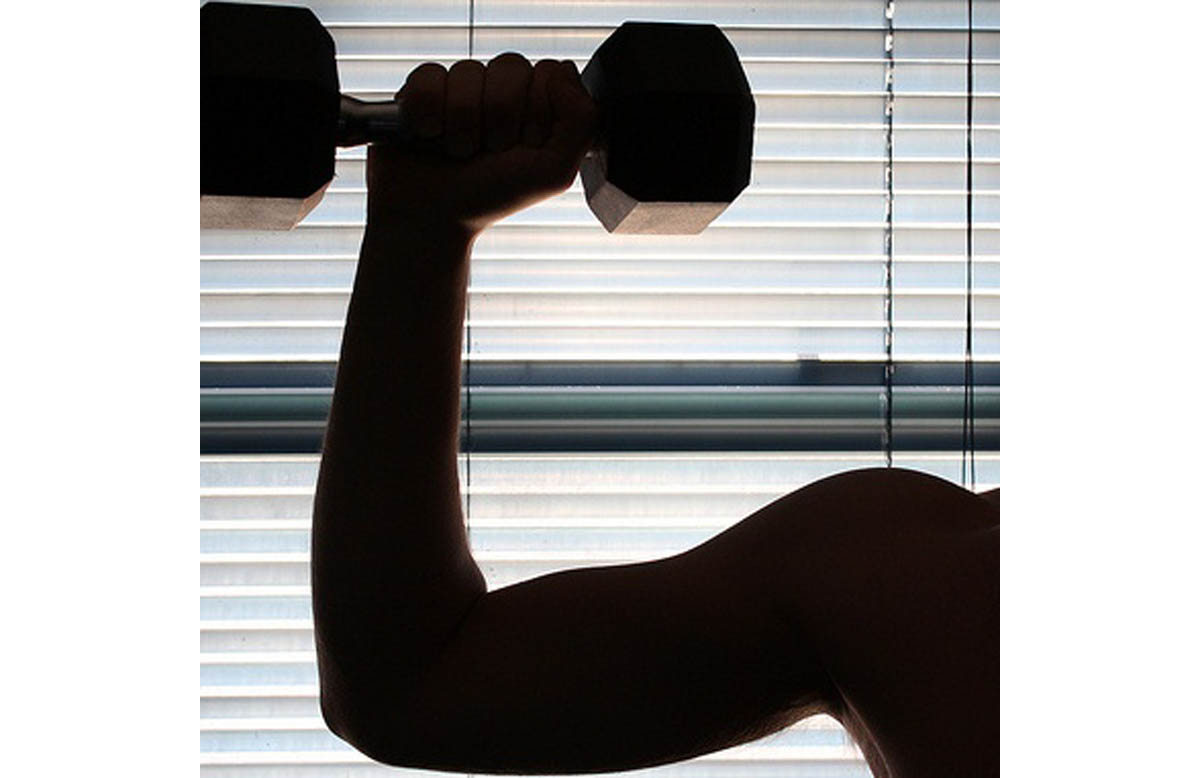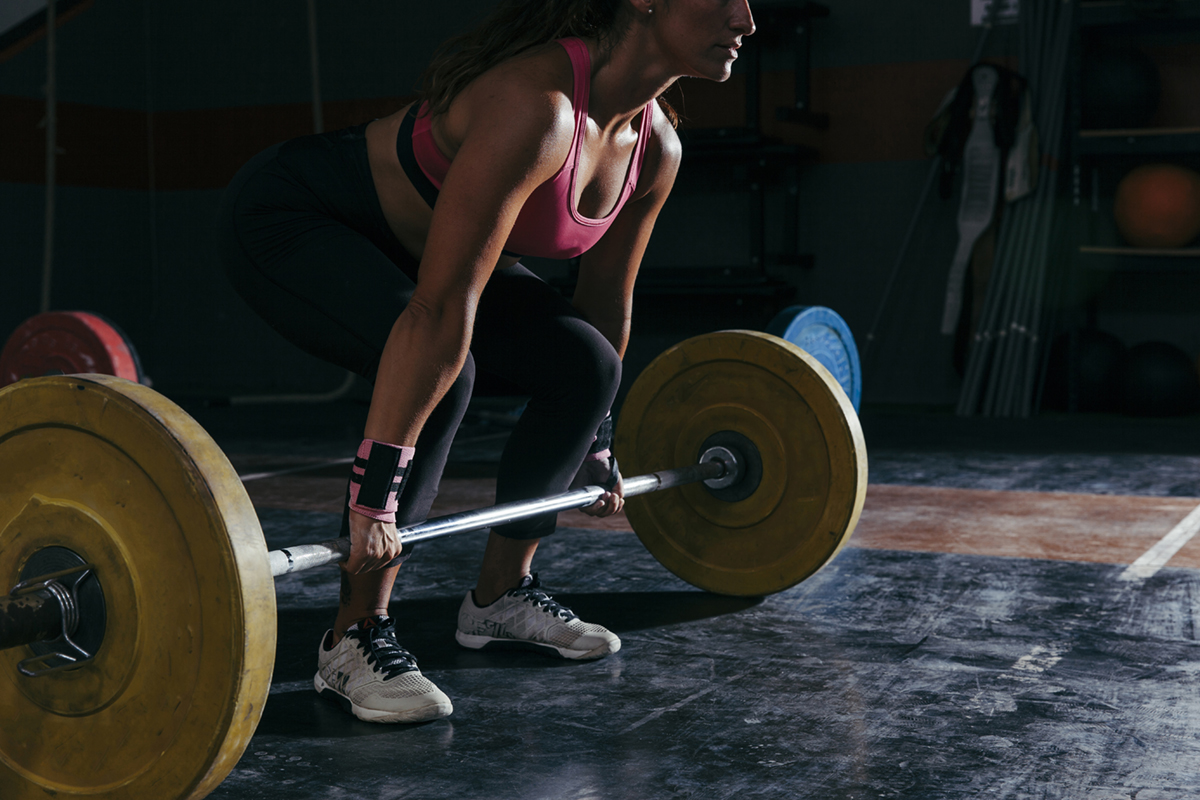Ask 100 women what they do in the gym, and you’re virtually guaranteed to get 100 different answers.
The truth is – there is no right and wrong when it comes to weightlifting. Anything can work, provided you do it with intensity and consistency. There is however an optimal approach, as well as plenty of sub-optimal approaches.
For the best results, be that for gaining strength building muscle mass, increasing fitness, shredding fat or just getting healthier, the optimal approach is the one you need to be taking to meet the goals you have set for yourself.

Let’s have a quick rundown on weightlifting and strength training first.
The Female Weightlifting Dogma
The classic advice given to females was that they shouldn’t train with weights unless they wanted to bulk up. During the 70s and early 80s there was an obsession with women’s aerobics – cardio classes, leg warmers, sweat bands and jumping jacks were all the rage during this time. The closest most women got to resistance training were Jane Fonda-style leg lift exercises and Rosemary Conley sit ups and knee pushups.
The trend then gradually started to change, and more women started to jump on the weight training bandwagon. Research and knowledge showed that weight training wasn’t just about building muscle – it could ramp up your metabolism, torch fat, burn calories and help prevent injuries too. The standard advice given to women was to use light weights to “tone and define” the muscles, allowing them to maintain a traditional feminine physique while building strength at the same time.
Fast forward to the present day, and the mainstream is gradually getting a better grip on how women should train. Pink dumbbells and sets of 300 reps are definitely out, and proper strength training is most certainly seeing a surge.
The general advice given to women now is that they should focus on compound exercises. These are moves that work multiple muscle groups and joints simultaneously. Think squats, lunges, pushups, pullups, bench presses, rows, deadlifts – any move where you’re working lots of muscles and generally having to work harder than if you were doing curls or kickbacks, or just sitting on the leg extension machine.
The theory behind the compound exercises
The theory behind the recommendation of compound exercises is that because they work more muscle fibers, they also burn more calories. This increased muscle activation also results in a greater production of testosterone, growth hormone and lactic acid, all of which lead to faster fat loss.
Compounds have real world carryover too. Think about all the things you do in everyday life – picking up grocery bags, lifting something onto a high shelf, holding your kids, or, of course, working your construction job or cycling packages around town as a bicycle courier, or anything else at all – all of these require the use of many different muscles and the coordination of numerous joints.
The set and rep guidelines have changed too. People have gradually begun to realize that the high reps for toning idea doesn’t hold weight, and that heavy training, using challenging loads that force you to make a huge effort are definitely the way to go.
So by the sounds of it, heavy compound exercises are all you need. Five sets of five on squats, deadlifts, bench presses and rows and you’re sorted, right?
Well it’s not quite as simple as that. While you could certainly get amazing results just by giving your all on these four compound exercises, to get the absolute best results, you’ll need a little more.
Introducing Isolation Exercises
Isolation exercises are the current scourge of the fitness industry – it’s very in vogue to dislike them.

However, isolations aren’t all bad.
In theory you work your biceps with chin-ups, calves with squats and triceps with pushups, but the muscle groups these exercises really focus on are the back, quads and chest, with biceps, calves and triceps coming in as secondary assistance muscles. No one really gets a great arm pump from rows, or sees their calf size shoot up from doing lunges.
Despite what some may say, you need to include isolation exercises in your program if you are after a well-rounded fitness regime that leads to strong muscles.
Only performing compound exercises can lead to muscular imbalance, claims Nick Tumminello, strength coach and owner of Performance University in Baltimore. Your dominant muscles can take over, leaving the weaker ones lagging behind.
Let’s use the example of a squat again. Logic and textbook tells us that because of the joint actions involved, the muscles that are working are your quads, hamstrings, glutes, calves, abdominals, obliques and lower back. While this is definitely true, it’s very unlikely you’ve ever woken up the day after a tough squat session and complained of sore obliques or tight calves – more likely the phrase “Ouch my thighs” or the fact that you can’t sit down on the toilet unassisted indicate that actually, the muscle you felt by far the most was your quads.
By neglecting isolation exercises you really are selling yourself short. The result will be weight loss, if that's what you're after, but without the overall strength and endurance that would really serve you well in your everyday life and in terms of your health.
Most women are unhappy with at least one body part, with the common culprits being calves, glutes, triceps, abs and shoulders.
While isolating these areas won’t spot reduce fat from on top of the muscle, it will make the muscle bigger, resulting in it looking leaner, shapely and more defined. If you want awesome glutes, there’s no way you’ll get them with targeting them through hip thrusts, stiff-legged deadlifts and cable pull-throughs. Likewise stubborn triceps need isolation work, not just bench presses and pushups, and your calves respond well to being beaten into submission with various types of calf raise.
The Wrap Up
If you had to pick only one type of weightlifting exercise to do, then compounds are the clear winner.
Fortunately though, you don’t have to make such a difficult decision. Your program should be based around compounds, and they need to be your focus, but there’s no harm in adding in extra isolations where needed.
If you’re following a full-body or an upper/lower split routine, start each session with three to four heavy compound exercises, then pick two to three isolations for muscle groups that need an extra kick to get them going.
- “Train Muscles NOT Movements!”, By Nick Tumminello, Published on September 5, 2012, Accessed on November 22nd, 2012, Retrieved from http://www.schwarzenegger.com/fitness/post/train-muscles-not-movements
- Photo courtesy of mariachily on Flickr: www.flickr.com/photos/mariachily/4925711424

